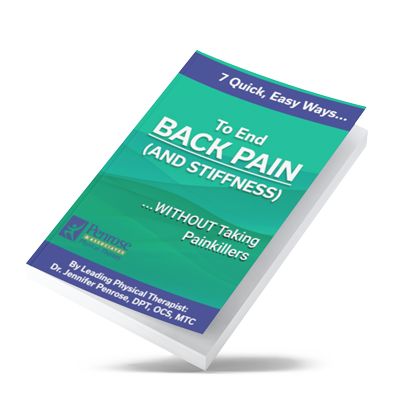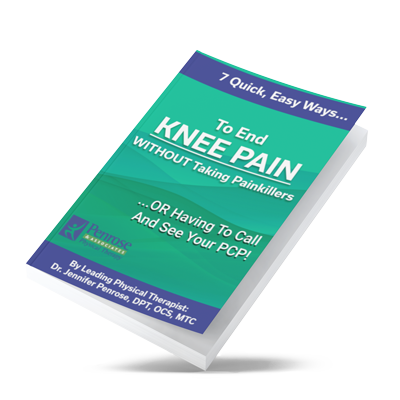Knee discomfort is something that many people experience, whether it’s from a past injury, daily strain, or the natural effects of aging. It’s also one of the most common reasons people visit physical therapy, and it can significantly affect your mobility and overall quality of life. The good news is that you don’t have to simply accept knee discomfort as a part of life. With a few simple adjustments and lifestyle changes, you can reduce discomfort and improve your knee movement, helping you stay active and engaged in your daily activities.
At Penrose Physical Therapy, we’ve helped many individuals just like you regain their knee mobility and reduce discomfort, and we’re excited to share some of our most effective strategies with you. Below, we’ll dive into three key adjustments that can make a big difference in your knee health.
1. Stretching: The Key to Flexible Muscles and Tendons
One of the most overlooked aspects of knee health is flexibility. Muscles and tendons surrounding the knee joint are crucial for stabilizing the joint and providing support during movement. When these muscles and tendons are tight, they can increase pressure on the knee joint, leading to discomfort. This is why stretching plays such a significant role in reducing knee discomfort.
Regular stretching can help maintain flexibility in the muscles surrounding your knees, including the quadriceps, hamstrings, and calves. This can help alleviate tension and pressure on the joint, reducing discomfort and improving mobility.
Stretching Tips for Knee Comfort:
- Quadriceps Stretch: Stand with one hand on a wall or chair for support. Grab your ankle with your hand and pull it towards your glutes, keeping your knee pointing straight down. Hold for 20-30 seconds and switch legs. This stretch targets the front of your thighs, helping to relieve tension in the quadriceps.
- Hamstring Stretch: Sit on the floor with one leg straight and the other bent. Reach for your toes on the straight leg while keeping your back flat. Hold for 20-30 seconds and switch legs. This stretch helps to lengthen the hamstrings, which can reduce strain on the knee.
- Calf Stretch: Stand facing a wall and place one foot forward with the other leg extended behind you. Keep both heels flat on the floor as you bend your front knee to feel the stretch in your calf. Hold for 20-30 seconds and switch legs. Stretching the calves can relieve tension in the lower legs, which directly impacts knee function.
2. Proper Footwear: Supporting Your Knees from the Ground Up
The right footwear is essential when it comes to preventing knee discomfort. Poorly fitted shoes or shoes that don’t provide adequate support can lead to poor posture, improper movement patterns, and increased stress on the knees. Whether you’re walking, running, or standing for long periods, the shoes you wear can have a significant impact on your knee health.
How Footwear Affects Knee Health:
When your shoes don’t provide the right level of support, it can cause misalignment in your lower body. For example, shoes with insufficient arch support or improper cushioning can cause your knees to twist or bend in unnatural ways, increasing the risk of discomfort and injury. This can be especially problematic for people with flat feet, high arches, or specific foot conditions like plantar fasciitis.
Footwear Tips for Reducing Knee Discomfort:
- Choose Shoes with Arch Support: If you have flat feet or high arches, shoes with proper arch support can help distribute pressure evenly and reduce strain on your knees. Look for shoes with orthotic-friendly insoles or consider custom orthotics for a personalized fit.
- Cushioned Running Shoes: For individuals who run or engage in high-impact sports, wearing cushioned shoes can help absorb shock and reduce the impact on your knees. Proper cushioning can also prevent joint wear and tear over time.
- Avoid High Heels: High heels can change your posture and force your knees into unnatural positions. If you must wear heels, limit your time in them and opt for lower, more stable shoes with a supportive base.
3. Adjusting Your Activity Levels: Avoid Overloading Your Knees
While staying active is essential for knee health, overloading the knees with high-impact activities can lead to discomfort. Activities like running, jumping, or climbing stairs without proper preparation can place extra strain on the knee joints, especially if done frequently or without proper technique. It’s important to listen to your body and adjust your activity levels to prevent overloading your knees.
How to Adjust Your Activity Levels:
- Low-Impact Activities: If you experience knee discomfort, try switching to lower-impact activities that put less strain on your knees. Swimming, cycling, or using an elliptical machine are excellent alternatives that provide cardiovascular benefits without the pounding on your knees.
- Take Breaks: If you’re involved in high-impact activities like running or sports, make sure to take breaks and give your knees time to recover. Rest is important for preventing overuse injuries, which can contribute to chronic knee discomfort.
- Strength Training: Incorporating strength training exercises into your routine can help improve the muscles around your knees, providing better support and stability. Exercises like leg presses, lunges, and step-ups can help strengthen the quadriceps, hamstrings, and calves, reducing the stress on your knee joints.
- Gradual Progression: If you’re returning to physical activity after an injury or period of inactivity, avoid jumping back into intense workouts. Gradually increase the intensity and duration of your activities to prevent overloading your knees and causing discomfort.
Conclusion: Taking Control of Your Knee Health
Knee discomfort is a common issue, but it doesn’t have to control your life. By making simple adjustments, such as incorporating stretching into your routine, choosing proper footwear, and being mindful of your activity levels, you can take proactive steps to reduce knee discomfort and improve your mobility. These adjustments can help you feel more confident and comfortable as you move through daily life and stay active for the long term.
If you’re looking for personalized support and guidance in managing your knee discomfort, we’re here to help! Schedule your FREE discovery visit today at https://penrosept.com/discovery-session/ or call us at (360) 456-1444 to take the first step towards a pain-free and active lifestyle.
We look forward to helping you get back on your feet and enjoy all that life has to offer!






